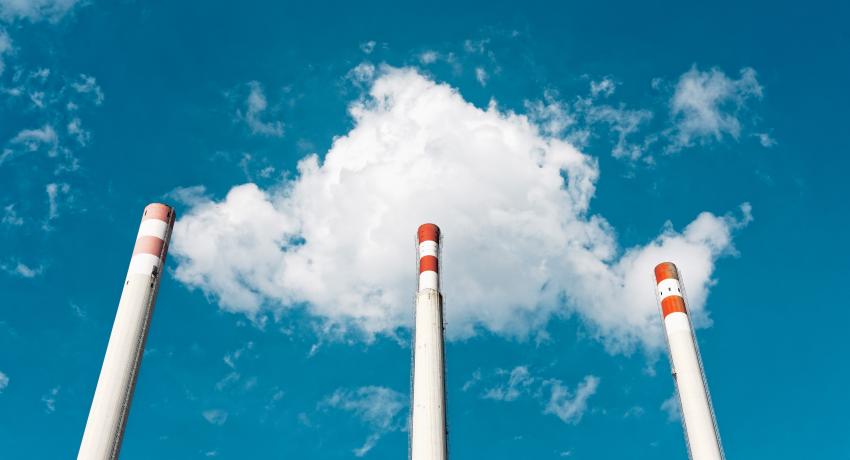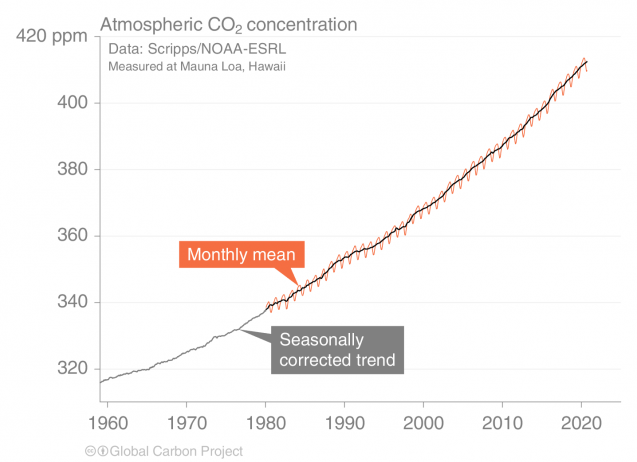The 4C project publishes the Carbon Outlook for 2020, which describes changes in the atmospheric concentration of CO2, and provides an update on the state of the carbon sinks.
In 2020, a record decrease in global fossil CO2 emissions was recorded, according to estimates reported in the latest 4C Carbon Outlook published in December 2020.
As a result of confinement measures in response to the COVID-19 pandemic, fossil CO2 emissions decreased by 7% compared to the 2019 annual emissions. Human activities, including both fossil fuels and land-use changes, added around 40 billion tonnes of CO2 in 2020, compared to 43 billion tonnes of CO2 in 2019.
Despite this emission decline due to the ongoing pandemic, the total emissions in 2020 were still high and comparable to 2012 levels, leading to a significant increase in atmospheric concentrations, which reached 412 ppm in 2020.
The Carbon Outlook, produced in collaboration with the high-profile annual Global Carbon Budget, in which many 4C researchers are involved, also reported that the land sink was slightly weaker in 2020, thus there was a similar increase in atmospheric concentrations in 2019 and 2020. The land and ocean carbon sinks continued to increase consistently with emissions, absorbing around 55% of the total anthropogenic emissions.
However, the outlook concludes that the effects of COVID-19 emission reductions are essentially undetectable at a global scale, and only detailed regional model may be sufficient to detect any changes related to COVID-19 measures.
For more information, please read the full 4C Carbon Outlook for 2020. You can also find the annual outlooks produced throughout the project in the dedicated page.


